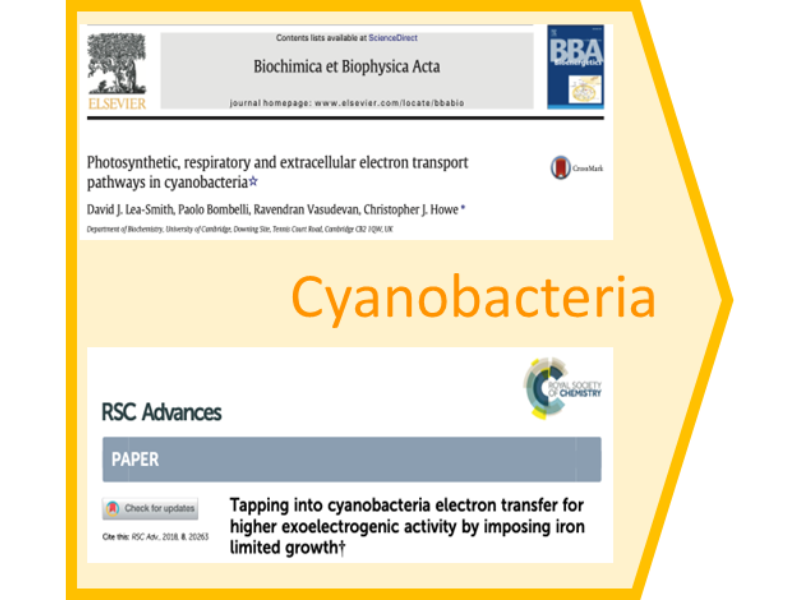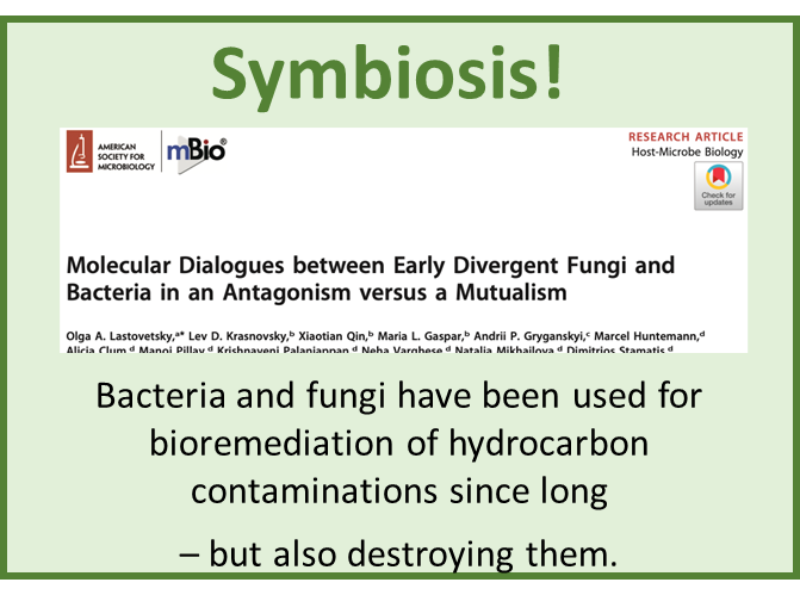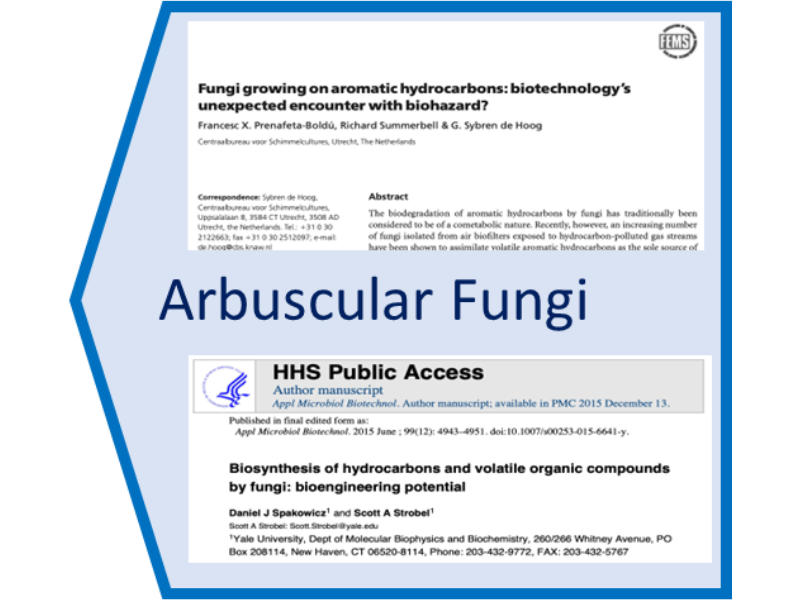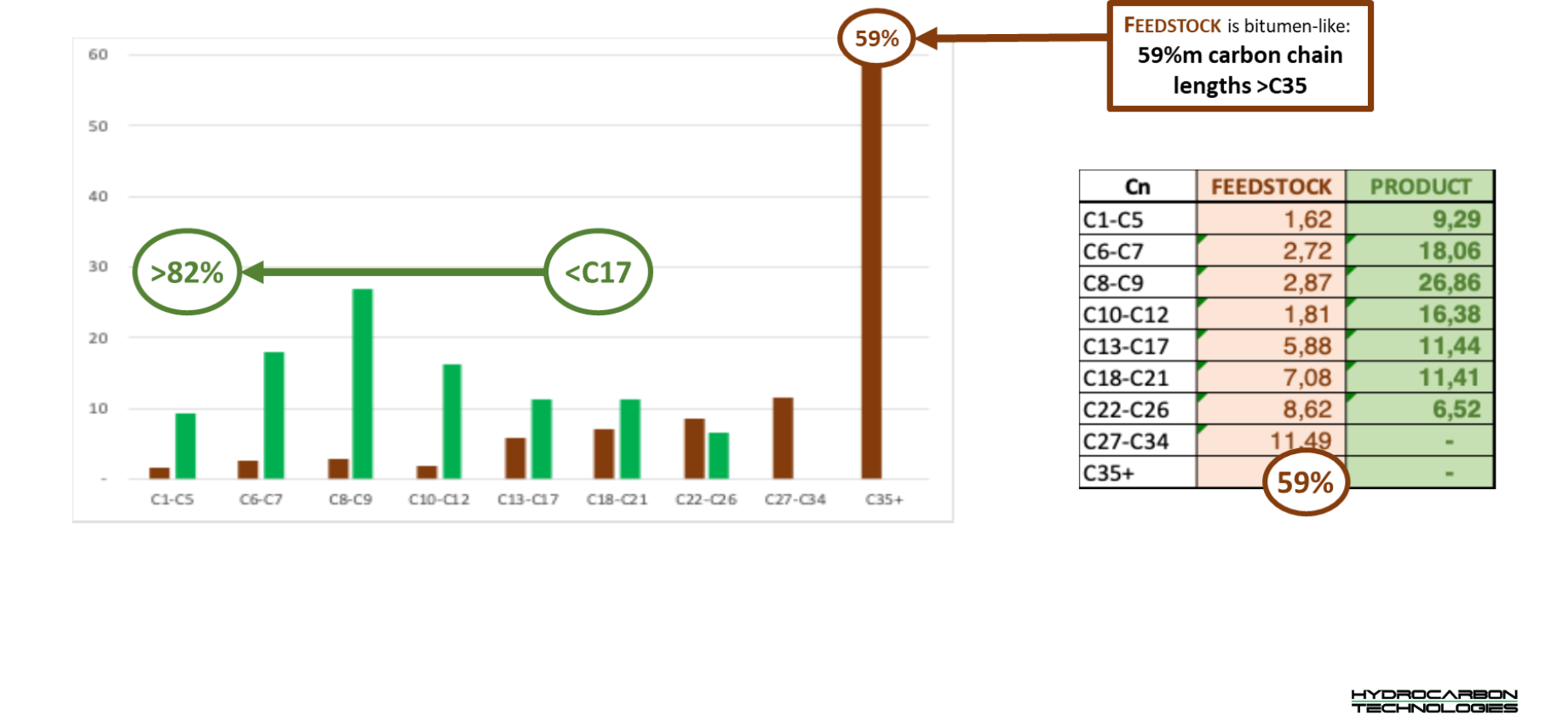Technology
The Principle is Based on Symbiosis between Bacteria & Fungi



Innovation and Patent:
1. We ‘fuse’ capable bacteria and fungi together to give them properties they don’t possess individually,
2. We place both in an environment where they are not normally found,
3. We control the complete process until we achieve the desired outcome.
Why It Works
Bio-cracking provides the energy to stay alive and multiply:


Given the right conditions, both bacteria and fungi grow exponentially, i.e. the next generation has double the size of the predecessor.
Energy balance: − YcatΔGcat − YanΔGan − ΔGdiss = 0
with Y… growth yield | ΔG… Gibbs free energy | cat… catabolism | an… anabolism | diss… disassociation.
How It Works
Exponential microbial & eukaryotic growth is key to fast treatment!

Given the right conditions, both bacteria and fungi grow exponentially, i.e. the next generation has double the size of the predecessor.
Result
Extra Heavy Crude Treatment
No agitation, 60C water bath temperature, after 24h of treatment:

Feedstock is San Miguel oil province (TX, USA) bitumen.
Analysis of the treated product seen in the video clip has zero alkanes >C26.
Agent volume used is about the same as feedstock volume.
Extra Heavy Crude is Transformed into Ultra-light Hydrocarbons
Oman (Ship / Tank cleaning residuals)
Reduction of Viscosity
Introduction:
Our customer has conducted various tests with our microbial agent and our defined process.
These are their statements:
"This test focused on viscosity depression as the primary treatment target in order to facilitate truck and pipeline transport; however, laboratoty analysis also extended to the underlying functional mechanism of microbial cracking.
Viscosity: The original target was to work with kinematic viscosities. This proved impossible for the before-treatment crude sample due to its exhibited non-Newtonian behavior (shear rate dependence), which appears to originate from the 11% by mass ("m%") water content of this sample."
Discussion of Results:
- The viscosity reduction target was <900cSt at ambient temperature (Oman desert).
- The shown carbon distribution comparison demonstrates the cracking of heavier hydrocarbon molecules into shorter ones as the driving reason for the viscosity reduction. This property upgrading is an inherent benefits of the technology and increases the crude quality. E.g., decane went from 1.38m% before treatment to 7.55m% after treatment, an increase of 447%. This proves that this is not a simple dilution by the agent.
Australian Case I
Transformer Oil (TX) as Feedstock
Feedstock

Treated Product

Australian Case II
Waste Hydrocarbons as Feedstock
Feedstock

Treated Product

Australian Case Findings!
Transformer Oil (TX) and Waste Hydrocarbons
Feedstock

Treated Product

Different Feedstocks
from
Different Origins
but almost the
Same Output is achieved!
ARAB LIGHT
Comparison Before and After Treatment
Untreated Arab Light

Treated Arab Light

ARAB LIGHT
Comparison of (Atmospheric) Distillation records
Untreated Arab Light Treated Arab Light


![1[1] 1[1]](https://1h6c.com/wp-content/uploads/2024/12/11.png)

![6[1] 6[1]](https://1h6c.com/wp-content/uploads/2024/12/61.png)